Syrian Migrant Family Rescued from Inaccessible Slavonia Wetlands
February 13, 2021 – Osijek-Baranja police rescued a Syrian migrant family, including two children, from inaccessible Slavonian wetland terrain. They had become cut off and stranded on an island, surrounded by swollen waters
Osijek-Baranja police have rescued a Syrian migrant family, including two children, from inaccessible Slavonian wetland terrain, police revealed in a statement released on Saturday 13 February. They had become cut off, surrounded by swollen waters, in the area around Kopacki rit Nature Park.
At around 10 a.m. Friday 12 February, in a forest area near Aljmaš, police found a 19-year-old Syrian citizen during a regular patrol. The 19-year-old asked for police help because his family was cut off on a river island of Kopački rit.
Immediately after learning about the other members of the Syrian migrant family, the police dispatched two patrol boats to look for them. They discovered the Syrian migrant family in a very short time. In addition to the teenager already discovered, police found the rest of the Syrian migrant family travelling party to include three women, born in 1973, 1998 and 1999, and two children, born in 2016 and 2017.
The found persons were transported to the mainland by the police. There, they were met by an ambulance, which had been called due to cold temperatures in the area and fears their exposure could have lead to hypothermia. They were transported to the Osijek Clinical Hospital Center (KBC).
The Syrian migrant family was released from the hospital later in the same day.
It has been established that the Syrian migrant family have expressed their intention to apply for international protection in the Republic of Croatia. They have been sent to the Shelter for International Protection Seekers, a reception centre for asylum seekers in Zagreb, said the police.
Kopački Rit, where the Syrian migrant family were rescued, is a nature park in the eastern Croatia municipalities of Bilje and Kneževi Vinogradi. It is located northwest of the confluence of the Drava and the Danube, right next to the border with Serbia. It is comprised of many backwaters, marshland and ponds that exist immediately between these two great rivers. It is one of the most important, largest and most attractive preserved intact wetlands in Europe.
For the latest travel info, bookmark our main travel info article, which is updated daily.
Read the Croatian Travel Update in your language - now available in 24 languages.
Two Bodies Found By The Road, Frozen On Papuk Mountain
January 26, 2021 – Multiple harrowing questions are posed by the tragic discovery yesterday of two bodies found frozen on Papuk mountain. They were at first suspected to be those of migrants. It is still not yet known how they came to be there, if they were travelling together or alone.
Famous for its wealth of covering forest, cascading streams, picturesque views and wildlife, Papuk is the largest mountain in Slavonia, eastern Croatia. It's actually a stretch of mountain range with an eponymous peak and the whole area is designated as a Nature Park. It draws thousands of visitors each year who come to enjoy its natural beauty and the opportunities for walking and hiking it provides. But, in a place we associate with the fullness of life, it is death that yesterday came to Papuk Nature Park.
Two bodies have been found frozen on Papuk. On a section of the Velika - Jankovac road, which runs north-south right through the heart of the Nature Park, winter service employees found the first body frozen on Papuk on Monday at around 9.45 am while clearing snow on the route with a plow. At around 3pm on the same day, a second body was found frozen on Papuk by a 41-year-old man working in the area. Both were bodies of young men. Details were provided by the Virovitica-Podravina Police Department.
Though the two bodies found frozen on Papuk were not discovered simultaneously, they were located quite close together - within 3 or 4 kilometres of each other. It is not currently known if the two persons were associated with one another, were travelling together or of what nationality they are. On the evening of Monday 25 January, it was suspected and being widely reported in Croatian media that the bodies found frozen on Papuk were those of migrants.
If the persons were travelling through the area and were not alone, anyone alive and remaining within the mountainous area will be in a precarious position. Over recent days, temperatures within the park have reached daytime highs of -2. At night, the temperature has dropped to below -8. The snow is currently up to half a metre deep in some places on the Nature Park. As with many mountainous regions of Croatia at present, the snow continues to fall.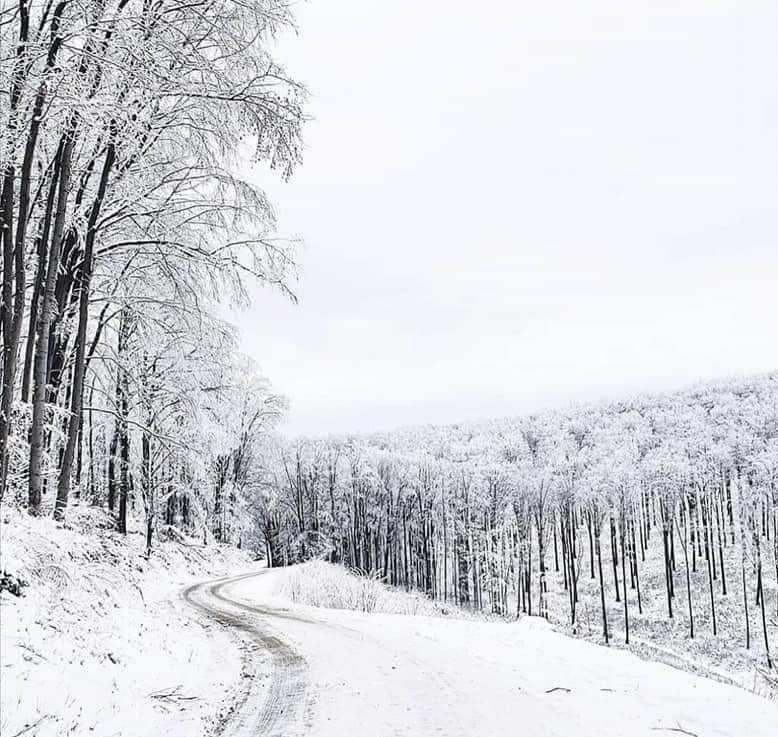 The snow is up to half a metre deep in some areas on Papuk at present. Over recent days, the nighttime temperature has dropped to below -8 © PP Papuk
The snow is up to half a metre deep in some areas on Papuk at present. Over recent days, the nighttime temperature has dropped to below -8 © PP Papuk
If the bodies found frozen on Papuk are ascertained to be migrants, many will wonder just what they were doing there and how they came to be there. The area in which they were found is some 70 kilometres from the nearest border with Bosnia and is not on any existing route popularity attempted by migrants for passage into more westerly-lying countries in Europe. From Papuk, the next nearest European border is Hungary, just short of 50 kilometres to the north. The crossing of the border into Hungary again is not one presently chosen by migrants.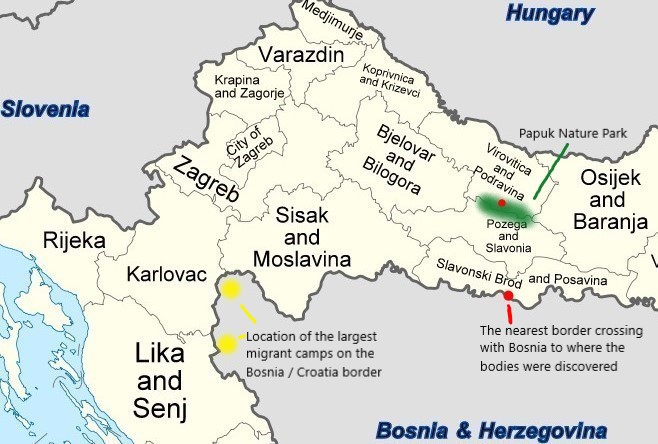 Map of Croatia © NordNordWest derivative work: Southpawphilly (talk), adapted by TCN
Map of Croatia © NordNordWest derivative work: Southpawphilly (talk), adapted by TCN
“It's a very strange route,” TCN was told by a man who has spent extensive time with migrants in the Bosnian camps which lie just across the border from Croatia. He preferred not to be named in this article. “If they are migrants, it is possible that they wandered off route. But, in my opinion, that is highly unlikely because most of them use mobile phones (for navigation) even more than we do.”
“I'm really only guessing, which is all that anyone can do for now, but I think it is more likely that, if they are migrants, someone drove them halfway and just left them there, telling them that it was a place that it was not. That's very much something that some of the smugglers are capable of. They could have been driven across the border from Bosnia, taken to the edge of the mountains and told that Slovenia was just on the other side.”
For now, the identities of the bodies found frozen on Papuk remain a mystery, as do the circumstances of how they came to be there. Croatian media is reporting that they have unofficially learned that no documentation was found on either of the bodies. This has lead many to believe that the bodies found frozen on Papuk may actually be locals who had become trapped there by severe and deteriorating weather conditions. The immediate area in which the bodies were found experienced a snowstorm on Sunday, with up to half a metre of snow being deposited.
By the late morning of 26 January, some Croatian media were reporting they had learned that the men were not migrants but were, in fact, local men. The matter is under investigation by the police. A search of the area was undertaken and a survey of the surrounding terrain assessed in order to decide whether other services were needed to be called on for any continuing search.
By order of the County State's Attorney from Bjelovar, both bodies were transported to the Department of Pathology in OB Virovitica, for autopsy and identification. A brief police statement said the public would be notified after an autopsy was performed.
UPDATE: In the mid-afternoon of 26 January, police confirmed that the bodies were those of a 26-year-old and a 38-year-old, both from the local area. The men's families had performed the sad task of identifying their bodies. Later in the day, it was confirmed that the two men did in fact know each other - they were brothers-in-law.
TCN will be updating this story as and when we receive more and relevant details
Welcome! Initiative Demands Justice for Migrant Girl Killed by Train
ZAGREB, November 21, 2020 - The Welcome! Initiative on Saturday demanded justice for Madine Hussiny, a six-year-old Afghan migrant girl who died near the Croatian border three years ago, claiming that "nobody has been held to account yet."
The initiative said that on the day of her death, three years ago today, Madine's mother crossed the Croatian border with her six children and walked for an hour before spotting Croatian police, telling them they intended to apply for asylum.
The family says they were told to go back to Serbia and return to Croatia the next month, and that police ignored their plea to spend the night in Croatia because the children were exhausted. Police drove them close to the border and told them to follow a railway track towards Serbia, but shortly after that, Madine was killed by a train.
Welcome! said those responsible for her death had not been punished and that "violence and deaths on Croatian borders are normalised."
"That's why we are requesting justice for Madine and everyone who lost their lives in the search for security, those who are persecuted and those who have died on borders and in the name of borders," said the initiative.
Madine's death will forever be a symbol of the "cruelty of the contemporary border control regime and the European apartheid of which it is part," it added.
Croatian institutions have not taken responsibility and Madine's family has applied the European Court of Human Rights, the initiative said.
This was the third #JusticeForMadine campaign.
Mijatovic Calls on Croatia to Stop Violence Against Migrants at Border with Bosnia
ZAGREB, October 22, 2020 - The Council of Europe Commissioner for Human Rights, Dunja Mijatovic, on Wednesday called on Croatia's authorities to stop violence against migrants at its border with Bosnia and Herzegovina and to start punishing the police officers responsible for inhumane treatment of irregular migrants.
For some time foreign and local nongovernmental organisations have been accusing Croatia's law enforcement authorities of extreme violence and collective expulsions of migrants who are trying to pass through Croatia in an attempt to reach western or northern Europe. Croatia's authorities reject such allegations every time.
Mijatovic underscores that reports about rising violence and other crimes allegedly committed by law enforcement officers have been arriving despite the fact that that two years ago she called on Croatia's authorities to investigate those allegations.
Mijatovic says that she is worried by the government's rejection of the allegations made by the nongovernmental organisations and investigative journalists.
The CoE commissioner says that the independent Croatian institutions for human rights protection and international organisations, including various bodies of the CoE and UN special rapporteurs, have raised an alarm about the situation along Croatia's borders.
Police Still Looking for Missing 11-Year-Old Afghan Migrant Girl
ZAGREB, September 20, 2020 - Police are still looking for 11-year-old Banin Hossein, a girl from Afghanistan who according to her asylum-seeking father Seyed Hossein Shah, separated from him and their migrant group in Brocanac, at an army training ground near Slunj on August 27, Minister of the Interior Davor Bozinovic has said.
"There are indications that the girl continued her journey with another group of migrants, but that has not been confirmed since that group has not been found," Bozinovic told Hina on Sunday.
Even though police and army forces have been looking for the group, their search has not yielded results and the investigation in the case continues, notably through international legal assistance, Bozinovic said, adding that so far there was no confirmation of the group's having been earlier registered in camps along the Balkan migration route but that not everything had been checked.
Speaking generally of the problem of illegal migration, Bozinovic said that it was a fact that there had been a number of false reports about migrant childen going missing. For example, in the case of a false report about the disappearance of a Syrian girl in 2018, "Croatian police were criticised for more than a year by various activist reporters," said Bozinovic.
"It was only more than a year later that we received confirmation from Jordan that the girl in question had never left the camp in Jordan where she had stayed as a refugee. Illegal migrants are aware that if they say that they are looking for a child, they will not be repatriated. I can understand that, they are trying to get hold of European countries at any cost, specifically Austria, Germany, Sweden or other countries which do not want or cannot take them in," he said.
This is a security issue, Bozinovic says, claiming that some media simply do not want to admit that or the fact that policies in European countries are changing, that rightist camps are growing stronger and that migration can no longer be treated just as a humanitarian issue.
He stresses that one's fleeing death and war is a humanitarian issue but that fleeing poor living conditions is not.
The minister believes that humanitarian problems will grow deeper due to the coronavirus pandemic because "it will double the number of hungry people globally."
The group of 13 illegal migrants, from whom Banin Hossein allegedly separated at a military training ground on August 27, are in a reception centre in Zagreb and they have all applied for asylum in Croatia.
For the latest travel info, bookmark our main travel info article, which is updated daily.
Read the Croatian Travel Update in your language - now available in 24 languages
Drunken Migrant Smuggler Takes 24 Foreigners To Wrong Town
August 27, 2020 – The inebriated people trafficker misheard or misunderstood and took his passengers to Dobrinj, on island Krk, instead of Brinje in Lika
They must have been very trusting of the driver or just very bad at geography. Migrants sitting in the back of a people smuggler's van on Tuesday ended up spending twice as long in the baking-hot confinement than they needed to.
It's only around 70 kilometres from the Bosnian border to Brinje, in Lika, their intended destination. You can do the journey in around an hour and twenty minutes. But, their inebriated driver misheard or misunderstood where they wanted to go. He instead took them to Dobrinj, on Krk island. It's a three-hour drive and almost 200 kilometres from the border to there.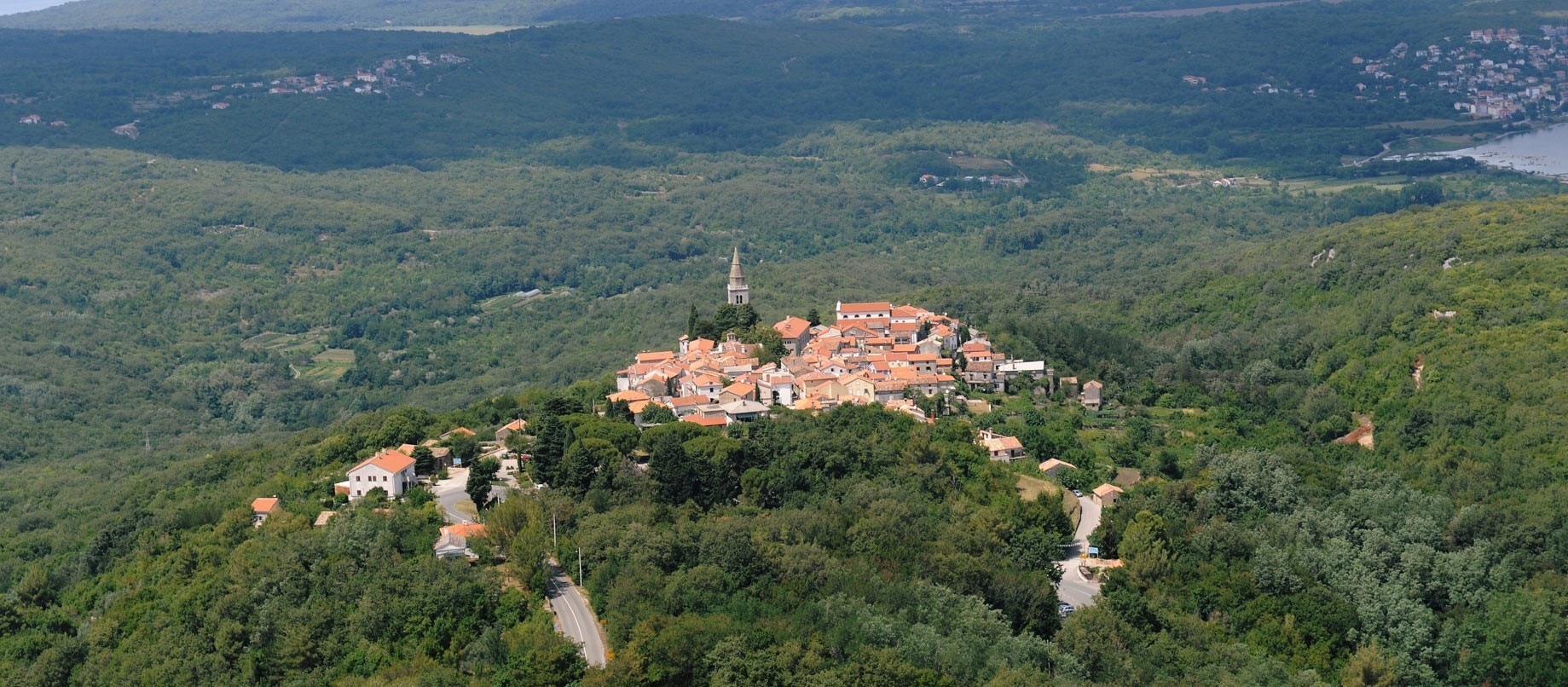
The sleepy village of Dobrinj is not used to hosting many visitors © Tourist Board Krk island
Not so popular with tourists as other parts of the island, Dobrinj is a sleepy village that relies more on its olives and sheep than on the footfall of visitors. It is not used to hosting strangers, save for the bears who occasionally come in winter to hibernate in the wilds on the outskirts of town.
Villagers were therefore taken aback when a heavily-loaded and struggling van with Zagreb license plates rolled into town at around 7pm. Even more shocking was the state of the driver. Novi list reports that locals he encountered described the man as being visibly intoxicated or "under the influence of heavier opiates."
But, an even greater surprise lay in store for those peering through their curtains at the curious scene. Once the doors of the windowless van were opened, some 24 out-of-place looking young men emerged.
Inhabitants of the village are reported to have expressed sympathy for the hapless and misguided passengers. Although the cretinous mistake by the driver is certain to have raised a few smiles. Island police were soon called to the scene and took both the driver and his passengers into custody in order to begin investigating exactly what had transpired.
Croatia Border Patrol Tracking Migrants With Portable Thermal Imaging
During the 2015 migrant crisis, Hungary and Slovenia built border barriers to thwart the influx of illegal migrants. Until recently, Croatia border guards have faced the daunting task of manually monitoring their unfenced 1,326 km border, which is also a non-Schengen EU border. However, with the help of advanced thermal imaging technology, Croatian border guards have finally gained an edge on stopping illegal migrant movement.
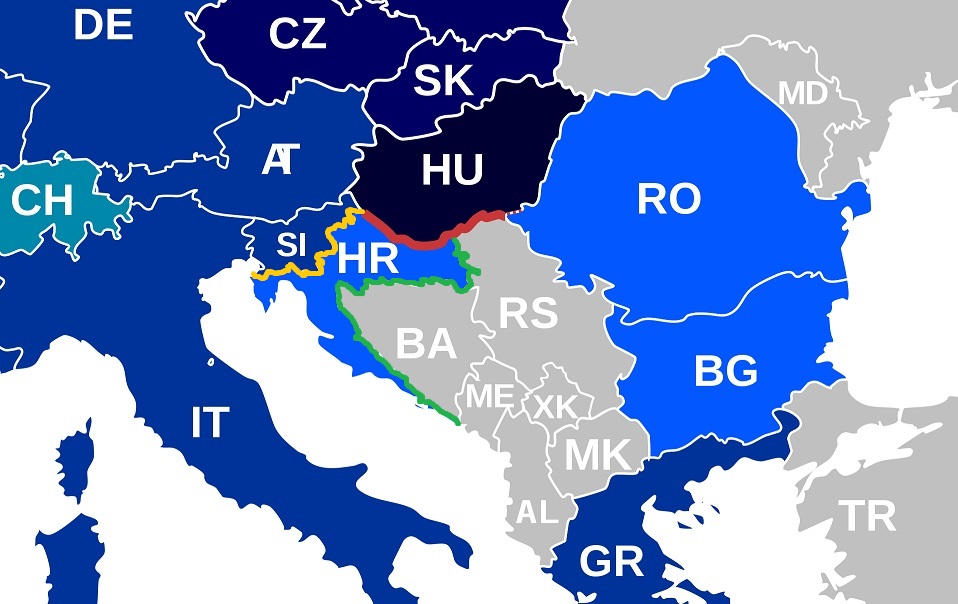
Hungary Border Fence (Red) | Slovenia Border Fence (Gold) | Croatia Border No Fence (Green) | Wikipedia
Unfenced Croatia EU Border 1,326 Kilometers Long
The Hungarian border barrier, which spans the borders of Serbia and Croatia, is 523 km long. The Slovenian border with Croatia spans 670 km. By contrast, Croatia shares a combined 1,326 km unfenced border with Bosnia and Serbia (1009 km with Bosnia, 317 km with Serbia). And migrants, many of whom are biding their time in nearby border camps, make repeated and daily attempts to enter Croatia from both countries, a practice which they call "The Game".
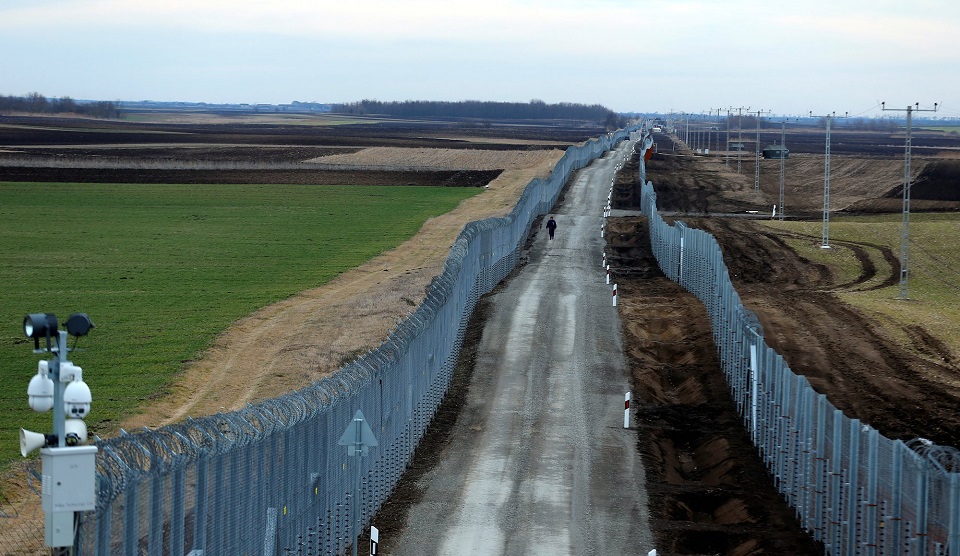
Hungary Border Fence | Wikimedia Commons
Electrified Hungarian Border Barrier Stopped Illegal Migration
Once completed in 2015, the Hungarian border barrier effectively halted migration into that country. It is equipped with parallel barbed-wire fences, floodlights, security cameras, and loudspeakers which blare warnings in English, Arabic and Farsi. The fences also deliver a mild electric shock upon contact, and have rendered any potential accusations of migrant pushbacks a moot point.
The Slovenian border barrier, while not as advanced, has also deterred attempts by migrants to enter Croatia’s Northwest neighbor. Both fences have effectively left many migrants, who are seeking entry into the Schengen zone, stranded in Croatia. While trapped in Croatia, they work with smugglers or attempt to continue their journey to Italy, Germany and France on their own.
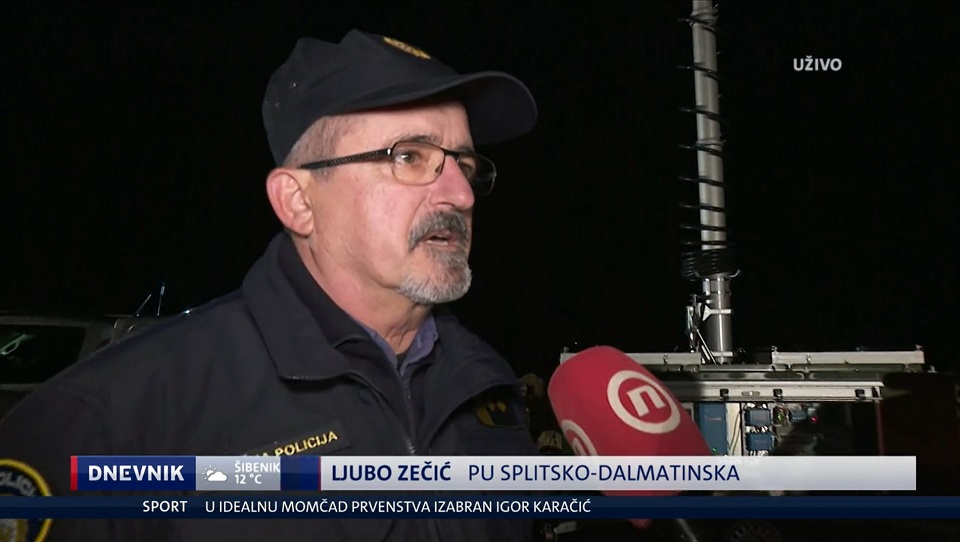
Croatia Begins Using Mobile Thermal Imaging Cameras
The Croatian border is now being protected by mobile thermal imaging cameras which can detect people illegally trying to enter Croatia from up to distance of several kilometers. The Nova TV/Dnevnik news team went to the border on January 26, 2020 and was the first to see how the 6 million EUR system works in practice.
Croatian police departments located on the illegal migrant route and roads leading to Croatia have been equipped with 17 Flir mobile camera systems.
Ljubo Zečić of the Splitsko Dalmatinska County Police Administration said that there are two devices are in their jurisdiction and indicated that it is very helpful that the system is mobile and can be easily transferred to positions which have been detected as frequent crossings.
Most Migrants Enter Croatia From Sarajevo and Mostar
"Most migrants coming from Bosnia are attempting to enter Splitsko Dalmatinska County from Sarajevo and Mostar. In 2019, our police department reported a 30 percent increase in illegal migrants and a 54 percent increase in smugglers," Zečić said.
Tomislav Poljak from the Trilj station demonstates the Flir thermal imaging device, which has already thwarted the plans of numerous migrants and smugglers to enter Croatia illegally.
"Our colleagues are walking about two and a half kilometers from us, and we can detect exactly what is happening at that distance with this device," explains Poljak.
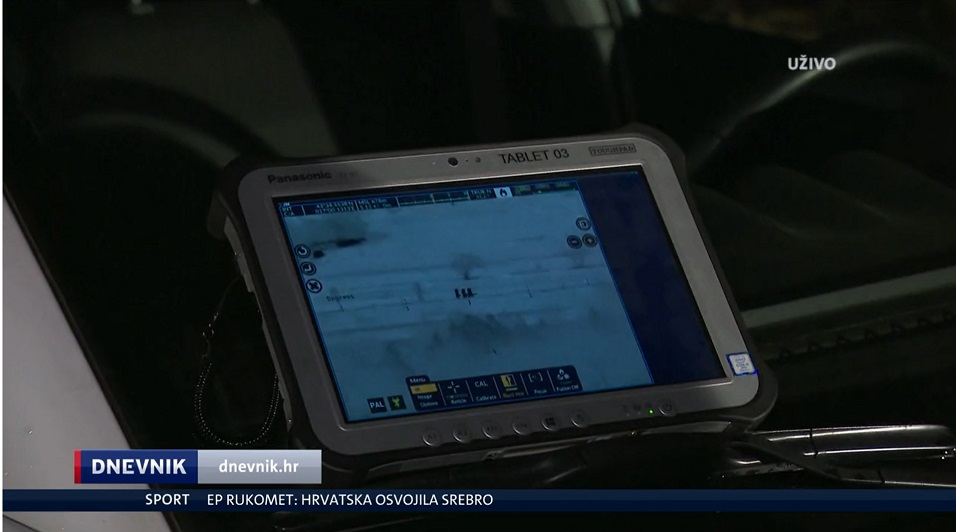
Migrant Cell Phones Permit Communication and Coordination
As soon as Tomislav's work shift began, he noticed some suspicious activity on the border. It was likely that someone was attempting to enter Croatia on a gravel road, which is often used by migrants going to Sinj. The nearest border control team was immediately dispatched to the field.
"A lot of migrants have very good cell phones and are quite well informed. And nowadays, they use temporary sim cards with these cell phones. They always have another trick up their sleeves,” Tomislav points out.
Cameras Detect Migrant Movement Across Bosnia Border
Almost a kilometer above sea level, the police officers found an abandoned truck which migrants often us to seek shelter from bad weather. Since there was no one in the truck, the Trilj border guards continued their search with manual thermal imaging devices.
"Without this technology, it would be much harder to do our job because you cannot see anything in the dark with human eyes," Zdenko explains.
The police action was soon abandoned because the suspect returned to Bosnia and Herzegovina.
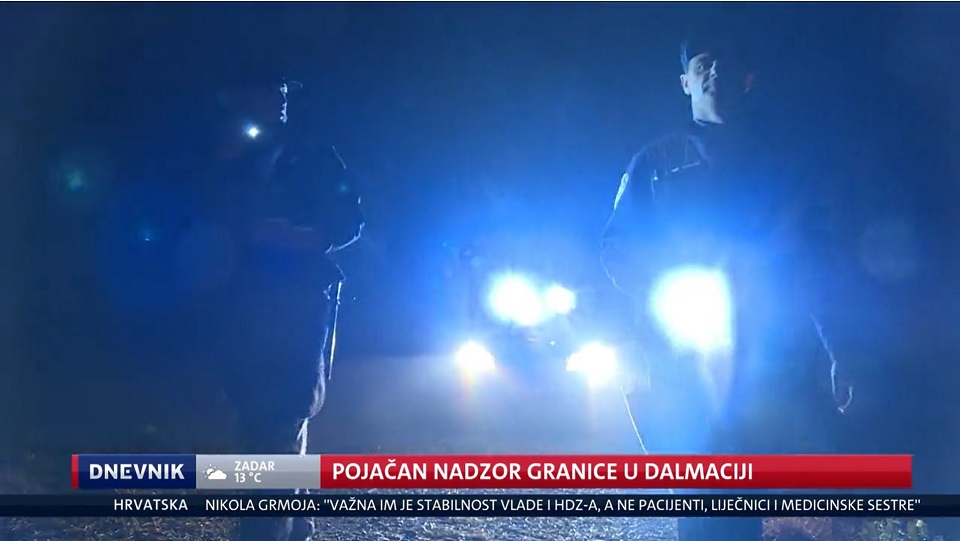
Cameras Can Be Moved Within 20 Minutes
The benefits of these devices are numerous. "If we need to move it to another location quickly, it takes us maybe 15-20 minutes to pack it up and drop it off," Tomislav says.
The cost of one Flir thermal imaging camera is almost 2.7 million HRK (362,789 EUR). If you approach it; the device automatically notifies police officers on the ground and issues a verbal warning. With the help of this technology, police believe that they will finally be able to stay a step ahead of smugglers and people trying to enter Croatia illegally.
Follow our Politics page to keep track of the migrant crisis in Croatia and efforts to control illegal border movement.
Croatia Detains Three British Nationals Over Migrant Smuggling
Some rather disappointing news has come to light thanks to a report from The Washington Post as it continues to look at Europe's migrant crisis on November the 4th, 2019 - and Croatia is in the limelight.
As the Associated Press/WP writes on the 4th of November, 2019, three British nationals have been caught and are currently being held by Croatian police (MUP) for apparently smuggling illegal migrants. The publication claims that one of the individuals in question also attempted to run over a Croatian police officer in a vehicle.
WP writes that a statement reads that Croatian police approached a vehicle which was being driven by a 31-year-old British man while parked close to the Slovenian border. The car then sped toward one of the officers, leading him to jump out of the oncoming vehicle's path to safety.
Following that already strange incident, the individual was arrested. According to a statement from the police on Monday, the man who seems to have attempted to run over, or at best scare the Croatian police officer was linked to two other men, who also hold British citizenship, who were trying to transport a number of ''foreign citizens'' (their citizenships have not been specified) over the Slovenian-Croatian border in a van.
In addition to that, the authorities in Croatia's neighbour to the north, Slovenia, have claimed that their police officers have also caught and detained as many as nine people who hold various different citizenships for trying to smuggle migrants, recording a very concerning 150 attempted illegal border crossings since last Wednesday alone.
In addition to this, WP reports that issues of a similar nature involving migrants have occurred in other European countries over the last couple of days, too.
We will continue to update this article as more information is officially released. Stay tuned.
Make sure to follow our politics page for more.


